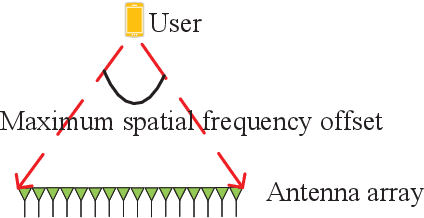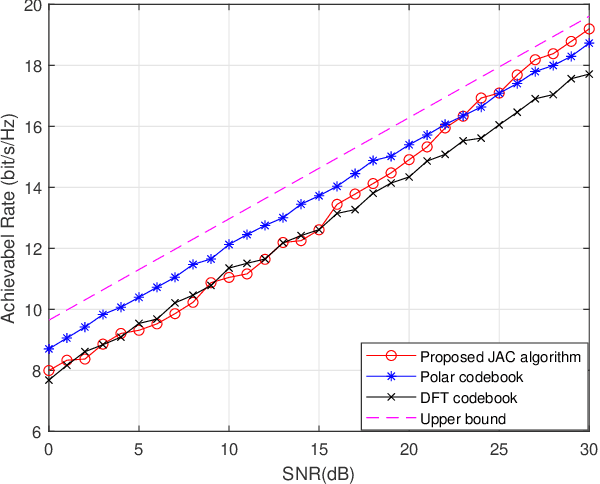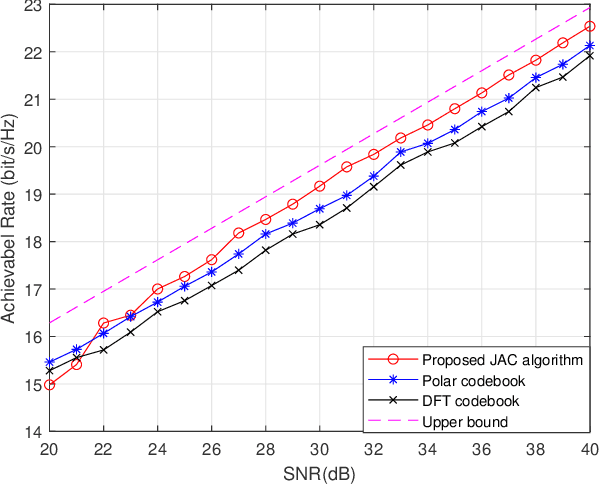A Near Field Low Time Complexity Beam Training Scheme Based on Spatial Orthogonal Decomposition
Paper and Code
Dec 15, 2023



With the application of high-frequency communication and extremely large MIMO (XL-MIMO), the near-field effect has become increasingly apparent. The near-field beam design now requires consideration not only of the angle of arrival (AoA) information but also the curvature of arrival (CoA) information. However, due to their mutual coupling, orthogonally decomposing the near-field space becomes challenging. In this paper, we propose a Joint Autocorrelation and Cross-correlation (JAC) scheme to address the coupling information between near-field CoA and AoA. First, we analyze the similarity between the near-field problem and the Doppler problem in digital signal processing, revealing that the autocorrelation function can effectively extract CoA information. Subsequently, utilizing the obtained CoA, we transform the near-field problem into a far-field form, enabling the direct application of beam training schemes designed for the far-field in the near-field scenario. Finally, we analyze the characteristics of the far and near-field signal subspaces from the perspective of matrix theory and discuss how the JAC algorithm handles them. Numerical results demonstrate that the JAC scheme outperforms traditional methods in the high signal-to-noise ratio (SNR) regime. Moreover, the time complexity of the JAC algorithm is $\mathcal O(N+1)$, significantly smaller than existing near-field beam training algorithms.
 Add to Chrome
Add to Chrome Add to Firefox
Add to Firefox Add to Edge
Add to Edge